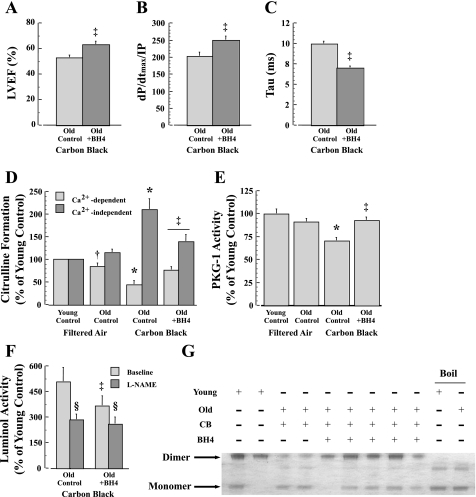Fig. 7.
Effects of tetrahydrobiopterin (BH4) treatment significantly improved cardiac function in CB-exposed 28-mo-old mice as shown by left ventricular ejection fraction (LVEF; A) and right ventricular contractility (dP/dtmax/IP, where IP is instantaneous pressurse; B) and relaxation time (Tau; C). Improvements in LV and RV function with BH4 treatment were coincident with reversing a fall in Ca2+-dependent and a rise in Ca2+-independent NOS activity (D), and a fall in PKG-1 activity (E). Likewise, BH4 treatment led to a lowered ROS generation derived from NOS-uncoupling in cardiac tissue from older CB-exposed mice (F). G: representative NOS3 dimer blot from isolated cardiac myocytes from 18- and 28-mo-old mice exposed to either FA or CB shows a preservation of the NOS3 dimer in older mice following CB exposure. ‡P < 0.05, BH4 treatment vs. control; *P < 0.05, CB vs. FA exposure; †P < 0.05, 28 mo vs. 18 mo; §P < 0.05, l-NAME vs. baseline.

